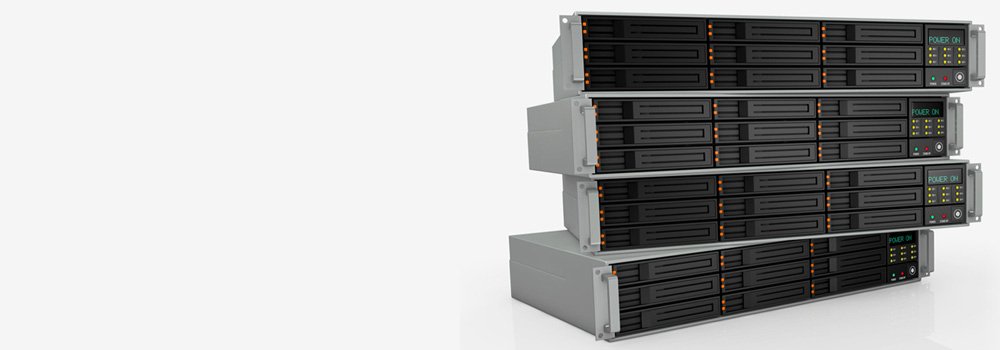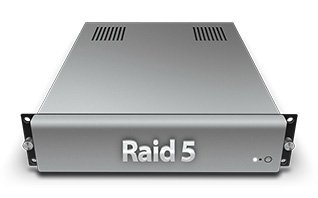Professional RAID 5 Data Recovery Services:
Introduction to RAID 5 Data Recovery
RAID 5 combines data striping and parity, storing information across multiple drives while using parity data to offer redundancy. This allows RAID 5 arrays to continue operating if a single drive fails. However, RAID 5 arrays can experience data loss when more than one drive fails, or if a rebuild error occurs, requiring expert recovery solutions to reconstruct data using parity information.
How RAID 5 Works
RAID 5 stripes data across three or more drives, with parity blocks distributed across the drives. Parity data allows for recovery if one drive fails, as the lost data can be reconstructed from the remaining drives and the parity information. This configuration provides a balance between performance, storage efficiency, and fault tolerance, making it ideal for business environments.
Common RAID 5 Failure Scenarios
- Single and Multiple Drive Failures: While RAID 5 can tolerate a single drive failure, data loss occurs if multiple drives fail.
- Controller Failure: A failed RAID controller can make the entire array inaccessible, requiring controller repair or replacement.
- Rebuild Errors: If a RAID rebuild fails, data can become corrupted, resulting in data inaccessibility or loss.
- File System Corruption: Corrupted file systems prevent RAID 5 arrays from mounting, making data retrieval difficult.
Each failure type has unique recovery requirements, especially when parity data needs to be reconstructed.
The Importance of Professional RAID 5 Recovery
RAID 5 recovery involves reconstructing data based on the parity information stored across the array. Attempting RAID 5 recovery without professional tools and expertise risks permanent data loss. Our Professional RAID 5 services provide controlled environments, advanced tools, and specialised knowledge from the last 25 years necessary to handle complex RAID 5 failures safely.
Types of RAID 5 Data Recovery Services
Logical Data Recovery
Logical recovery addresses software-based issues, such as file system corruption or accidental deletion, without needing physical repairs.
Physical Data Recovery
When RAID 5 drives suffer physical damage, component-level repairs are necessary to restore functionality. Our RAID Technicians handle these drives in cleanroom environments, preventing contamination and ensuring safe data recovery.
Firmware and Controller Repair
RAID 5 recovery may involve repairing or replacing the RAID controller if firmware corruption or controller failure prevents data access.
The RAID 5 Data Recovery Process
- Initial Diagnostics and Assessment: Our RAID Engineers assess the RAID 5 array to determine the extent of damage and identify the cause of failure.
- Drive Imaging and Cloning: Each drive is cloned to create a backup before data extraction, preserving the original data for secure recovery.
- Parity-Based Reconstruction: Parity data is used to reconstruct the RAID 5 array, rebuilding lost information by analysing stripe size, drive order, and parity.
Logical Data Recovery for RAID 5 Arrays
Logical recovery methods are used for non-physical failures, including:
- File System Corruption: Repairing corrupted file systems to make data accessible again.
- Software Recovery for Deleted or Corrupted Data: Specialised software retrieves deleted or corrupted files if they haven’t been overwritten.
Physical Data Recovery for RAID 5 Drives
In cases of physical damage, recovery involves specialised environments and techniques:
- Component-Level Repair: Repairing or replacing damaged components like read/write heads or circuit boards.
- Cleanroom Environment: Damaged RAID 5 drives are handled in cleanrooms to prevent contamination, ensuring safe repair and data extraction.
RAID 5 Controller and Firmware Issues
RAID 5 data recovery services also address issues with RAID controllers and firmware:
- RAID Controller Repair and Replacement: Replacing or repairing the RAID controller restores functionality when the controller has failed.
- Firmware Reprogramming: In cases of firmware corruption, reprogramming or updating firmware can restore drive functionality and access.
Specialized Tools for RAID 5 Recovery
Professional RAID 5 recovery services use specialised tools, including:
- Parity Reconstruction Software: Software specifically designed for rebuilding RAID arrays using parity data.
- RAID Analysis Tools: These tools help our RAID technicians understand stripe sizes, drive order, and other critical RAID parameters.
- Drive Imaging Software: Imaging software creates sector-by-sector copies of each drive, preserving original data for safe recovery.





